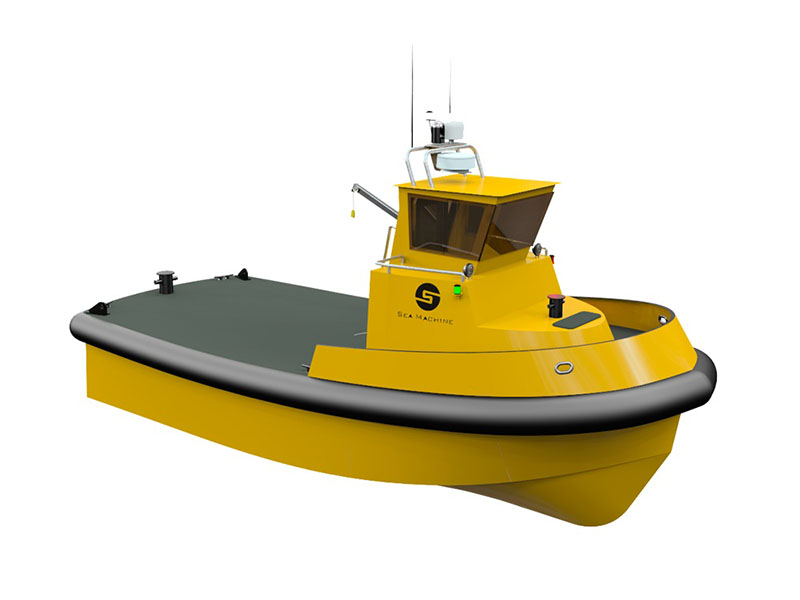The use of first-generation autonomous surface vessels in survey work, and ongoing research with larger robotic vessels in Boston Harbor and elsewhere, make it likely that second-generation technology could be on working vessels like harbor tugs within seven years.
“The Generation 1 technology is reality,” Michael G. Johnson, founder of the design start-up Sea Machines, told an audience Wednesday at the 2016 International WorkBoat Show.
Within a few more years, collaborative use of autonomous workboats, paired with manned command workboats, could be reality in harbor work, the offshore wind energy and aquaculture sectors, John said.
“We think there’s real value that can be brought to that space with advanced collaborative algorithms,” Johnson said. The technology is not about replacing people, Johnson contends, but freeing them for other tasks while improving safety and reliability.
Advancements in aviation controls have made commercial aircraft more reliable and safer, but in maritime work “we are still steering these vessels manually,” Johnson said. In the high revenue-low margin world or marine transportation, where more than half of costs are in personnel, efficiency is the way to increase productivity, he said.
In three years of research and testing, the Boston-based Sea Machines group developed its Remote Command System, called RC NXT, for wireless control of a vessel. It could be used for day-boat operations including workboats, tugs and launches operating within 1000 meters of the human pilot, according to the company’s website.
The company’s Autonomous Navigation System, DP NXT, uses sensors on board the vessel and proprietary algorithms “to give the watercraft a degree of self-awareness, enabling her to efficiently self-motor from point-to-point while avoiding active and passive obstacles,” according to the company.
This year Johnson and his team have stepped up their testing to a Dutch-built 25’ twin screw push tugboat, initially testing in enclosed waters before moving out into Boston Harbor. During the months of summer traffic they kept the test boat within 1,000’ of the control vessel, but lately have been able to safely test at ranges up to 1 mile, he said.
The first-generation vessels are capable of surveying in pattern – the proverbial “mowing the lawn” for sounding depths, for example. Programmed waypoint routes are well within the technology, and simple station-keeping, Johnson said.
The next step up in capability could be unmanned harbor tugs – essentially remote controlled assist boats that “become more of a thruster” for the manned command tugboat, he said. Second-generation technology could make possible autonomous tugs of 50’ or larger. Any of that of course requires a long process of legal and regulatory acceptance by very conservative industry, the Coast Guard, insurers and classification groups.
“We see a 25-year adaption curve,” Johnson said. Like the transitions from sail to steam and coal to oil in the 19th and 20th centuries, “we think in 25 to 50 years our industry may be just as unrecognizable.”




